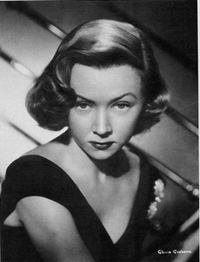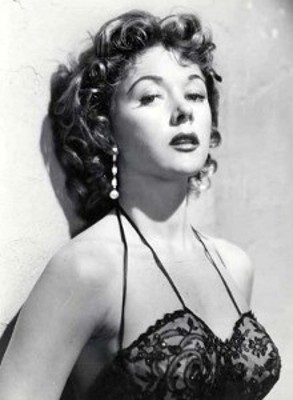For the second year running, we at Film Noir Blonde are celebrating one of film noir’s great treasures, Gloria Grahame (Nov. 28, 1923 – Oct. 5, 1981). Why? Because we feel like it. Though she played a number of iconic parts in the late 1940s and 1950s, and won a Best Supporting Actress Oscar for her work in “The Bad and the Beautiful” (1952, Vincente Minnelli), co-starring with Lana Turner, Kirk Douglas and Dick Powell, Grahame typically wasn’t considered a top-tier actress in her day.
“I don’t think I ever understood Hollywood,” she once said. Nevertheless, in addition to her film résumé, she worked regularly in TV and theater.
No stranger to scandal (she married her stepson several years after her divorce from director Nicholas Ray), Grahame was unconventional and liked to do things her way. Whether she was flirtatious and tough (remember good girl/bad girl Violet Bick in “It’s a Wonderful Life”?) or the ultimate victim (“The Big Heat”), her parts are often informed by her playful intelligence and sly sense of humor. Maybe that’s why we like her so much.
Anyway, here’s to singular, sexy, supremely talented Ms. Grahame! To read more and to see reviews of her films, click here.














From FNB readers